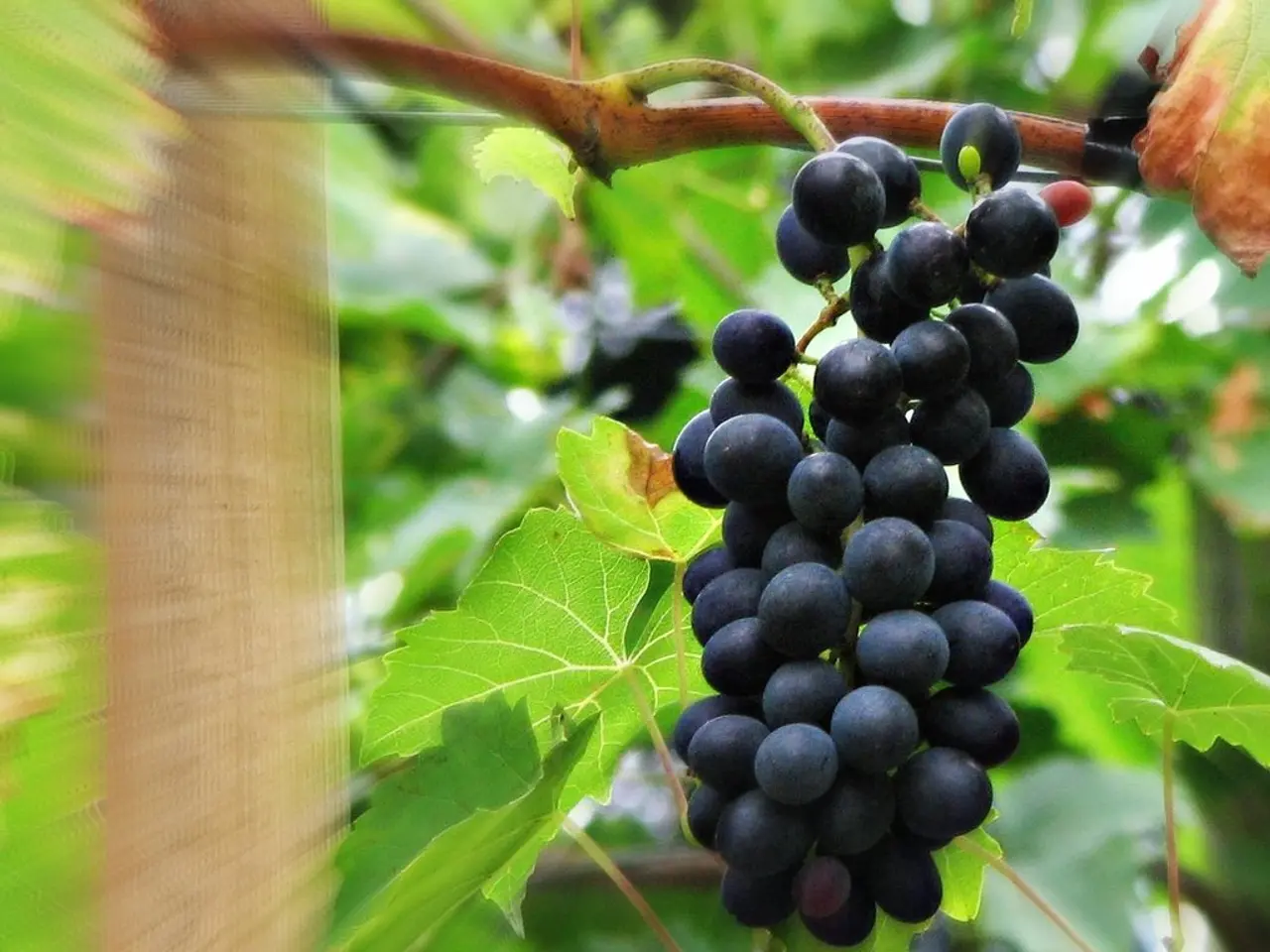Guidelines for Successfully Cultivating Grape Hyacinth (Muscari)
Grape hyacinths, scientifically known as Muscari, are small spring bulbs that add a burst of bright blue colour to any garden. These perennial plants, known for their tendency to self-seed, are a popular choice among gardeners for their easy care and versatility.
These charming plants are not only attractive but also safe for animals, pets, and wildlife. They attract a wide range of pollinators, including bees, making them a valuable addition to any garden.
Grape hyacinths can be purchased from various sources. Thompson & Morgan, Suttons, and Van Meuwen are some popular garden centres where you can find them. For a greater choice, consider shopping online, where retailers like Rare Plants, Crocus, and others offer a wider variety.
If you're looking to buy grape hyacinths in spring, you can find pots of flowering plants. However, buying dry bulbs in autumn is a more cost-effective option. Once you've purchased the bulbs, plant them in small clusters, about two to three times as deep as their height, and spaced about twice their diameter apart. The pointed end should face upwards.
For best results, grow grape hyacinths in moist but well-drained soil, in sun or shade. They adapt well to various conditions and can thrive in naturalised areas like lawns or under trees. Grape hyacinths look particularly good at the front of a border, in shady places, or in container displays, such as a window box.
When it comes to propagation, division during the summer dormancy period is the most effective method. During this time, congested clumps of bulbs should be dug up, carefully split into smaller clusters, and replanted in well-prepared soil. Seed propagation is also possible, but it's slower and less reliable compared to division.
Once established, grape hyacinths require minimal maintenance. After they flower, there's no need to do anything with them; they will die down naturally and regrow the following spring. To control their spread, you can cut back spent flowers. Grape hyacinths are generally pest and disease free.
There are various species and varieties of grape hyacinths available. Muscari pallens, with soft, translucent pale blue and white flowers, is one such variety that can be bought from Rare Plants. For a deeper blue, consider Muscari azureum, a Turkish variety with soft sky blue flowers, available from Crocus. For a more dramatic look, Muscari armeniacum, with larger, double-flowered heads, can also be found at Crocus.
In summary, grape hyacinths are easy to care for, versatile, and add a splash of colour to any garden. With their ability to self-seed and spread, they can become a permanent feature in your garden. Whether you choose to propagate by division or seed, plant them in autumn for a beautiful display in the spring.
Grape hyacinths can be considered as a valuable addition to both home-and-garden and lifestyle, as they are easy to care for and versatile plants that can thrive in various conditions. Additionally, they can be a worthwhile investment for home gardeners, as they can be bought from multiple sources such as Thompson & Morgan, Suttons, Van Meuwen, Rare Plants, Crocus, and others online.




